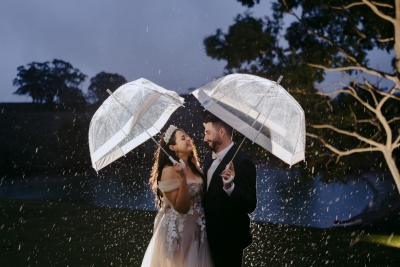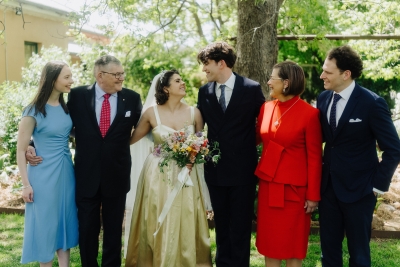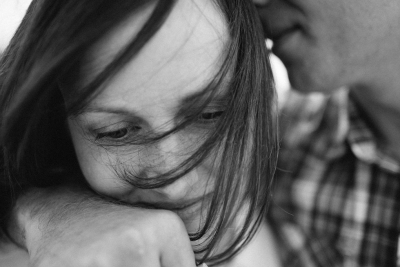With a background in documentary filmmaking and event planning, Diana Fisk has seen firsthand the power of story to connect, move, and transform. When it comes to weddings, she believes the same principle applies: story should be the foundation, not the finishing touch. In this Polka Dot Wisdom piece, Diana explores the idea that where all good wedding planning should start is the story – the real, personal moments that shape a couple’s journey. Rather than letting storytelling fall to the bottom of the to-do list, she invites couples to bring it to the forefront and let it guide every element of their day.
Photography by KLD Photography via Lauren & Warwick’s Colourful Party Wedding at Eleven Eighty
As someone who has made a career of telling stories, documentary filmmaking and event planning, I understand the backbone to creating anything on engagement, whether that’s a film, event or wedding ceremony, is one thing… Story.
Modern day ceremonies often rely on a beautiful location, a celebrant who will hopefully be able to share a few funny tidbits and a downloaded playlist of the couple’s favourite songs, generally love songs. Any thoughts of storytelling come in late, too late, once most of the details have been booked and it’s down to working out the nitty gritty of the actual ceremony wording with the celebrant. But what if we approached things differently?
What if we prioritised story above all else?
What if the story of the couple, their love story, was the central point of truth that all other decisions were made from?
Photography by Rose Photos via Rebecca & Nikhilesh’s Romantic Summer Wedding at Athol Hall
Step 1: What actually is your story?
Years of documentary filmmaking and interviewing a lot of people has taught me one thing – everyone has a story. And every couple has their own love story.
After I do a deep dive into someone’s life and their story, there are a number of key questions I ask myself when working out the best story to tell.
- What makes this person or people different from the rest?
- Have they overcome any big challenges? Or is there something they are overcoming in their life still?
- Were there any truly significant moments in their lives that stood out from the rest?
- Who else has been a part of their story? Ie. Was there a friend who helped get the couple together or a loved one they confided in about their budding relationship?
- What other details are there of significance? Are there any places that were extra special for them or a band they went to see on their first date?
Step 2: Use these key elements to plan your big day
Once you have done a deep dive you should already be brimming with ideas. Let’s have a look at how your story can inform some of the biggest wedding day decisions.
Location
Location choices are so often guided by what’s available in the area we are looking to get married, what fits in with our budget and what matches the aesthetic we were hoping for on the day.
I am going to suggest that it’s very possible to get a lot more creative than that.
What kind of location is going to be able to tell your story the best? Some examples may be…
- A couple that met and fell in love over a shared love of bands from the 60’s and 70’s – could you create a music festival feel with your location choice?
- A couple that met on a Contiki tour back in their 20’s – perhaps all the guests are asked to meet at a central location and arrange for a bus (tour guide and all) to drive everyone to the ceremony location.
- High school sweethearts that shared their first kiss during a party at a friend’s country farm – is the farm still there? Would it be suitable for a wedding ceremony?
In Australia you can legally marry anywhere. Dare to be different. There are no rules, what makes sense and what will be meaningful for the two of you and your story?
Photography by O Lemonade via Shane & Steph’s Intimate Summer Wedding in Port Melbourne
People
Having people speak at your wedding can be a great way to add another layer to the ceremony, though often this is somewhat limited by loved ones standing to share a reading that may or may not have meaning to the couple.
Storytelling can come through in speeches at the wedding reception, but there is such a great opportunity to bring it through the ceremony in a more intentional and relevant way.
Again, considering the exploration you have now done on your story and what makes you different – who are the best people to help you tell that? Some examples to consider..
- Perhaps the biggest obstacle you overcame as a couple was a strict father who didn’t want his daughter to date. All these years later he has given you his blessing to marry – how would he describe the early days?
- Perhaps you both had a friend each helping you work up the courage to have your first kiss. Bring them into the ceremony to explain what has happening for each of you that day/night.
- Did someone pick you up from the airport and saw you in tethers questioning if you would ever see your international love again?
If we were making a documentary about your story, who would we interview to help tell the story? How best can you weave those people into the tapestry of your ceremony and create something magical?
Photography by Martine Payne via Cherise & Norm’s Intimate Beach Wedding in Shoal Bay
Other Details
Don’t stop at location and people, what other things could you put in place to allow your guests and the both of you to feel connected to the core of your story?
In writing and film there are a number of additional tools creatives use to really help create a special world for their readers or audience. Things like props, set dressings, music, sounds, descriptions of smells or tastes.
Once again, what makes sense to your story? Some examples could be..
- Did you meet on a wine tasting tour? Perhaps you could have someone offering wine samples to guests on arrival?
- Did you get engaged in a sweet little French village? Why not set up small bistro tables for your guests that complement the location choice you made. If the budget doesn’t allow that, perhaps that could be your signing table?
- Has a big part of your relationship been sending each other voice memo’s? Why not include one or two memo’s at the appropriate time of your ceremony?
It’s important to separate the idea of a theme wedding when considering your options, vs something that allows you to bring your guests and the experience of your wedding day closer to the reality of your story.
It is also super important to consider how things work together and ensure that your day isn’t going to be a day of confused mismatched story elements with nothing to bring it all together. For example, if you have chosen a beach location for your ceremony that has no connection at all to the sweet French village you got engaged in, the bistro seats may feel a bit random in that setting. Add in a soundtrack of Neil Diamond who you once saw in concert, things could get very confusing very quickly
Ceremony Script
All celebrants worth their weight in gold will know the fundamental principles of how to tell a good story. Now you have considered the location, the people and the most important parts of your story, it’s time to bring it all together.
Most great stories have a pretty simple structure, the beginning, the middle and the end.
The beginning – this is where your key characters are introduced, and the story is set up.
The middle – this is where the characters would usually overcome conflict or challenges, working towards a greater purpose that will allow them to grow as individuals.
The end – the challenges are overcome, and the story is resolved.
The considerations we have explored throughout this article can be woven through the ceremony – people who speak to different parts of your story, music, sound recordings etc. And then, of course, the wedding vows and any other legal or more traditional formalities to be included.
My suggestion would be for the beginning and the middle to be where your history comes through and what brings you to the current day, the current moment – your union and the more formal wedding elements. This would be the ending of the ceremony.
Photography by Motta Weddings via Michael & Gabrielle’s Vibrant Winery Wedding at Zonzo Estate
Bringing It All Together
Let’s take this as an example:
Lee and Charlie have been together for years. They first met at a dinner party hosted by friends and quickly connected over their love of theatre. They have been regular theatre goers ever since and, in fact, Lee is now working in theatre as a creative director for a small independent theatre in Sydney.
Although they have a lot of other great things about their story – a proposal at Niagara Falls, a long-distance relationship for over a year and a puppy named Noodles that they are both obsessed with, the theatre element is what matters most to them out of their love story.
They think outside the box and decide to hire a local theatre, their favourite in the outskirts of Sydney, for the wedding ceremony. The theatre has never held a ceremony before and get right behind it.
Lee works with their celebrant to ensure all the details are just right. Guests are welcomed in by a number of ushers (friends of the couple) who hand out popcorn on arrival. They have a beloved friend act as the narrator and over the course of an hour they tell their love story through a series of different scenes, all being played out on the stage. Family and friends share stories from across the years and pieces of music of significance to the couple are played to transition between scenes.
Just as their history and love story is coming to an end, the narrator welcomes on to the stage one of the members of the chorus that has been singing their love songs during the ceremony. This person is actually the celebrant, and the last chapters of their story are closed as they now commit to each other as a married couple.
The one thing I hope anyone gets from this article is that apart from a small number of legal inclusions, you can approach your wedding day any way that makes sense to you. Why not create something that shares with people who you are as a couple and why your love story is one to be celebrated?
Photography by Jonathan Ong via Josh & Jermaine’s Bright Fun Wedding at The Wool Mill
The Takeaway
Apart from a few legal inclusions, there are no rules for how your wedding should unfold. Why not design a ceremony that reflects who you truly are? When your wedding is shaped around your story, it becomes more than just a day – it becomes a celebration of your journey, a moment that resonates deeply with everyone present.
Photography by Powder Puff Photography via Julia & Phoebe’s Modern Art Gallery Wedding in Melbourne
Your love story is worth telling. Make it unforgettable.
About the Author: Diana Fisk is a celebrant, access/inclusion specialist and storyteller. At the heart of Diana’s work is a deep commitment to inclusion, storytelling, and impact. Whether producing screen stories or leading events and ceremonies, Diana brings together creativity and care to help people feel seen, connected, and inspired. Diana works across sectors to create meaningful experiences that honour complexity and spark positive transformation.

















Join the conversation